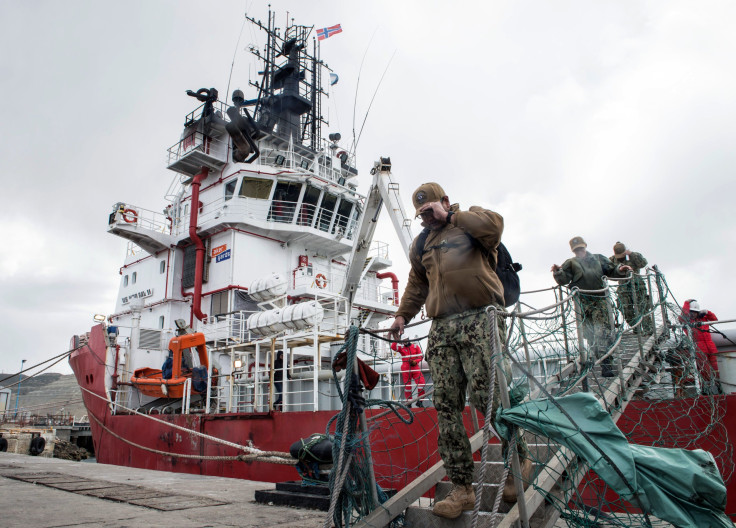Missing Argentine Submarine Latest: ARA San Juan Crew's Families Will Get Salaries

Argentina's Navy (ARA) on Tuesday said that it will continue paying wages to the families of the 44 crew members who are believed to have died after their submarine sank in the South Atlantic in November. Since the ARA San Juan went missing Nov. 15, a multinational search scoured hundreds of thousands of nautical miles.
The latest move by the ARA was said to be aimed at showing the next of kin of those on board the submarine that the navy is committed towards the families.
"A demonstration of the commitment assumed is to continue paying the (crew's) wages to the direct families," the navy said in a statement, saying it would also pursue "new initiatives and forms of assistance to improve the institutional response" to the tragedy. The statement also said that a Permanent Center of Attention was created at the Mar del Plata Naval Base "to respond, through all communication channels (telephone, email, post), to any needs and concerns that may arise."
Despite a search operation that currently involves three ships sweeping the site of the accident, the submarine has not been found.
On Monday, the Argentine navy said in a statement it was investigating "new objects" using two Argentine vessels and a Russian vessel.
"The vessel Islas Malvinas is current exploring the new objects," a statement released Monday said, according to Russia’s Sputnik News. "Tonight, the vessel San Blas will arrive in the search area to refuel [the] Sarandi destroyer."
The United States pulled out of the search efforts last week, leaving Argentina and Russia to conduct the searches. The U.S. Navy said it would continue to help from North America by providing data and planning analysis.
The ARA San Juan's last known location was about 300 miles from Argentina's southern coast and was believed to have disappeared following the battery failure. The German-built TR-1700 class submarine was commissioned in the 1980s and had been refitted between 2008 and 2014. It was built by a now-defunct subsidiary of Germany's ThyssenKrupp.
The disappearance of the submarine has also led to several conspiracy theories. The father of one crew member recently alleged that the disaster had been covered up by officials. Luis Tagliapietra, the father of crew member Alejandro Damian, told the U.K.’s The Times the navy was hiding things from the families.
"Something very serious must have happened for so many lies to be told and for the total lack of effort to find it," he said.
Jesica Medina, the sister of one of the 44 missing sailors on board the vessel, said a Royal Navy helicopter was chasing the Argentine submarine when it went missing. However, U.K.'s Ministry of Defense refuted the claims.
Argentine Navy spokesman Enrique Balbi told reporters late November that the captain said water had entered through the diesel-electric vessel's snorkel when its batteries were being changed. An explosion was later detected around the time and place where the submarine last made contact.
"The extreme environment, the time elapsed and the lack of any evidence eliminates a scenario compatible with human life," Balbi said. "These are hours of intense pain and anguish [for relatives] in light of the loss of their loved ones, our 44 comrades."
© Copyright IBTimes 2024. All rights reserved.





















